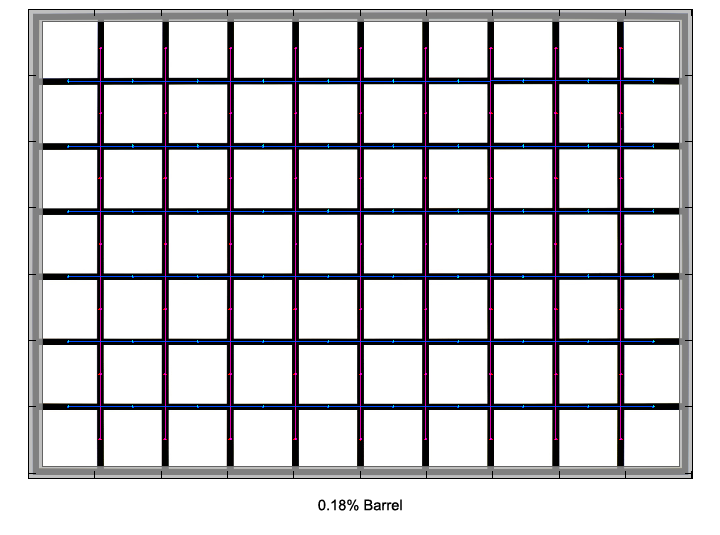|
Page 2 of 3

Distortion
The lens produces a very small amount of barrel distortion, which can be measured in the lab, but is no issue at all in real life. This is an impressive performance for a non-macro prime.

The chart above has a real-world size of about 120x80cm.
Vignetting
Vignetting is automatically corrected on digital M cameras, when the lens is either 6-bit coded or manually selected from the camera's menu. Since this correction is optional and can be switched off (by disabling lens detection), we provide both the lens' native vignetting as well as corrected figures.
The uncorrected light fall-off of the lens is unsurprisingly most pronounced wide open, reaching a rather hefty amount of slightly above 2.7 stops at the image corners. As usual, stopping down reduces the issue considerably. However, even stopped down to small apertures the amount of vignetting never drops below half a stop.
When corrected by the camera, vignetting is reduced to roughly 1.5 stops wide open, which can still be very visible with many subjects. From f/4 onwards, however, vignetting is no longer an issue.
Please note that this automatic correction is also applied to the raw DNG file and (regardless of whether it is done in camera or in post) doesn't come for free. Making the image borders lighter boosts the signal level as well as the noise level, thus leading to more visible noise than if there had been no vignetting.

MTF (resolution)
The lens delivers very good resolution across the frame at the largest aperture setting. By stopping down, the image center increases to excellent figures by f/2.8 already. At f/4, borders and corners follow up, too, giving excellent resolution across the frame.
By stopping down further, diffraction takes its toll and significantly reduces resolution at f/11 (and beyond).
The lens showed some focus shift when stopping down (residual spherical aberration).
Please note that the MTF results are not directly comparable across the different systems!
Below is a simplified summary of the formal findings. The chart shows line widths per picture height (LW/PH) which can be taken as a measure for sharpness.
If you want to know more about the MTF50 figures you may check out the corresponding Imatest Explanations

Chromatic Aberrations (CAs)
Chromatic aberrations (color shadows at harsh contrast transitions) are well under control. Wide open, CAs reach a value of just below 1.3 pixels at the image borders. They are reduced to a level of just 0.6 pixels by stopping down.

Bokeh
One of the primary usage scenarios for a fast lens is to separate the main subject from the background. In such an image the quality of the bokeh (out-of-focus blur) is of major importance.
Image blur is very smooth in front of the focal plane, however one can rarely take advantage of this with normal subjects. The more important blur behind the subject is a bit busy at the largest aperture setting, but improves by stopping down to f/2.8 or f/4.
Background highlights are not perfectly circular wide open towards the borders due to mechanical vignetting. Stopped down, the shape of the aperture shapes comes through and creates polygons instead of circles. There is a small amount of outlining at f/2, which can be reduced by stopping down.

Bokeh Fringing
Bokeh fringing is a common issue with relatively fast glass. It's visible as halos of different colors in out-of-focus areas - magenta (red + blue) in front of the focus point
and green beyond.
The Summicron shows only a small amount of bokeh fringing wide open, which disappears by stopping down.
However, these shots also illustrate the focus shift when stopping down that was mentioned in the MTF section.
|